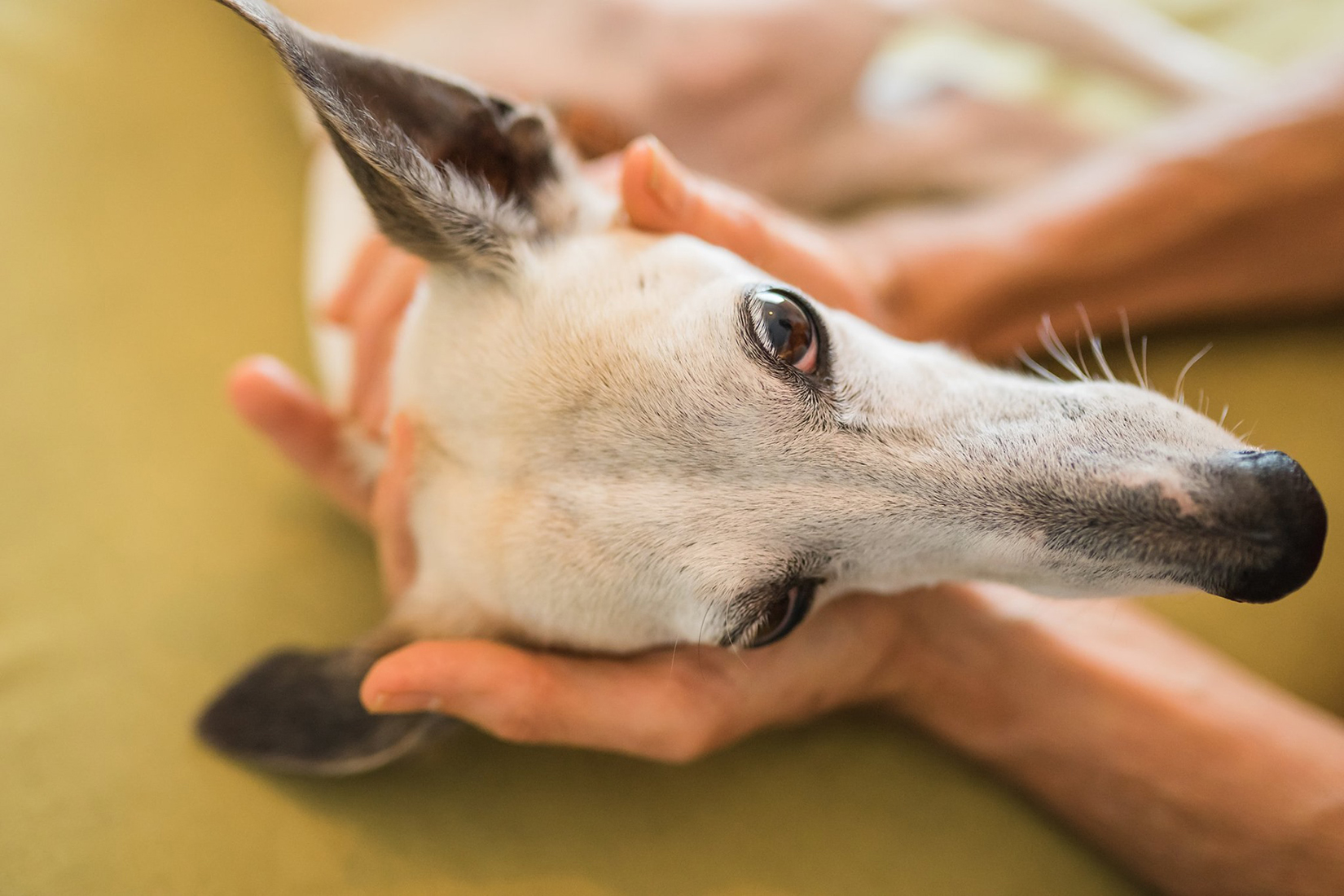Saving service dogs from unnecessary early retirement due to silent pain
Highly trained service dogs and working dogs are worth their weight in gold to the people who they support. They help blind people move through life safely.
They help kids with epilepsy, by sensing when fits are coming. They help people with PTSD feel safe, so they can go out in public and live a richer life. They help farmers move stock calmly and effectively.
They seek out lost kids, or people buried under rubble after disasters.
 |
| Police Dog Mace, part of the Brisbane Police Dog Squad (Credit: myPolice Dog Squad) |
They work with police and armed forces as protection dogs. They sniff out drugs and contraband at our borders. They race on tracks. These highly trained dogs are a massive investment.
I saw a client in the vet clinic the other day who had invested $30,000 dollars in a support dog for her son with disabilities and epilepsy. This dog had made a massive difference in her son’s life.
 |
| Kelpie Hoover sold for $35,200 at the Casterton Working Dog Auction in June 2021 |
These dogs are the superstars of the canine world – highly intelligent, athletic, able to perform high level skills under pressure. They are often literally irreplaceable.
At the same time, it’s important to honour the fact that all dogs are service dogs in disguise, working undercover.
Our beautiful canine companions offer everyone who shares their lives so much love, emotional support, and company. They might not be as highly trained, or cost as much to breed or train. But our every-day pets are every bit as valuable to their humans. Many people spend $5-10,000 dollars to buy a new pup.
I have many clients who have spent $30,000 or more on vet bills for severe illness, major surgery, etc. We love our dogs to bits, and would never want our companion animals to suffer silent pain either!
Silent pain is often invisible to dog guardians
All dogs experience wear and tear on their bodies as they age.
Playing with their friends, chasing the ball, running on the beach, even regular walking cause silent pain and tension to build up in the soft tissues of the body over time. Silent pain - soft tissue pain - is found especially in the fascia (connective tissues).
Professional working and support dogs often have a lot more physical demands – their workload causes additional stresses and strains on their bodies.
I’m a holistic veterinarian. My life work is finding and healing silent pain in dogs with massage/bodywork (and teaching pet owners and pet wellness professionals how to do this for their own dogs).
The raw truth is that more than half the dogs I examine have silent pain that their humans don’t know is there.
There are several important reasons for this pain being silent, or hidden, even from the most devoted and well informed dog guardians. Even many vets miss this kind of pain!
There are a whole lot of really good reasons why dog owners and vets often miss silent pain.
1. Silent pain builds up very slowly, little by little over a long time. Subtle signs like animals getting a little slower, stiffer, or not working as enthusiastically as they used to are often chalked up to normal aging.
 |
| Belgian Tervuren Conner discovered the joy of massages at age 13! |
3. Dogs have deep instincts to hide pain or weakness as a survival trait. Wild animals that show injury or weakness are singled out by predators, and their own pack may turn on and kill sick or injured dogs.
4. Silent pain is soft tissue pain. This kind of pain is invisible to X-rays, CT scans, MRI scans and Ultrasound scans. (This is another factor in why many vets miss silent pain.)
5. The only way to accurately and consistently find silent pain in your dog’s body is with a skilled hands-on assessment. You have to feel into the dog’s body with your hands to find silent pain. (This is easy to learn how to do for your own beautiful dogs).

6. In the case of service/working dogs, they are often high drive and tend towards higher pain tolerance. This masks the subtle signs that indicate when they may be developing silent pain.
Before we dig a little deeper into silent pain (the most commonly missed problem I see in dogs in my veterinary work), I want to talk a little more about why vets miss silent pain. It doesn’t mean they are bad vets! They simply have never been taught about silent pain, or how to assess for it effectively. I wasn’t taught anything about this issue at university.
Important signs that show when dogs may have silent pain
A warning. These signs are important, but many dogs will show none of them and still be suffering with silent pain. That’s why a regular (at least weekly) hands-on assessment is something all dogs need!
The first thing to look out for are any changes in behaviour. A small change in behaviour can be the tip of a huge iceberg of silent pain. Look out for:
✔️ Any sense that something is not right with your dogs
✔️ Any increase in your dog's reactivity or aggression
✔️ Any reduction in play behaviour
✔️ Shaking, trembling, excess panting
✔️ ‘Not wanting’ to jump on the couch, bed, or into the car
The last one is really important. A lot of my clients think nothing of this, but every animal I get my hands on who ‘doesn’t want’ to jump on the couch has pain stopping them from doing so.
The second thing to look out for are changes in how your dog moves and responds to you touching their body.
✔️ Any signs of slowness or stiffness in getting up and down
✔️ Flickering or twitching of the skin under your hands when you stroke your dog
✔️ Warm or hot areas on the body
✔️ Not stretching at all, or stretching a lot
✔️ Changes in posture
✔️ Anything less than a vigorous wave of shaking from nose right through to the tail
Again, the last one on this list is SUPER important. How dogs shake tell you a lot about the levels of silent pain in their bodies. But remember, these ‘red flags’ aren’t present in significant numbers of dogs with silent pain…
Finding and treating silent pain in service dogs (professional + domestic or ‘undercover’)
I have worked to help many, many dogs who had silent soft tissue pain over the years.
 |
| Credit: Colorado Forensic Canines |
I have seen a half-dingo TV star dog who had silent pain issues. And of course I’ve seen literally thousands of ‘undercover’ domestic service dogs (aka pets) suffering with silent pain.
When I treat these dogs with healing bodywork/massage, we see these dogs regain mobility, become happier, more playful, more active, and in the case of professional dogs, better able to focus and do their incredibly valuable work.
And bodywork is not healing only for physical pain. Trauma and PTSD are far more common in professional working and service dogs – many of these dogs are working in violent, stressful situations, and that takes its toll mentally and emotionally as well as physically.
 |
| Labrador working in the Canine Court Companion Therapy Dogs Program - Photo: Guide Dogs |
Some professional dogs have to be retired due to behavioural issues from PTSD, anxiety, etc.
And we are seeing more and more domestic dogs (aka undercover support/service dogs) who suffer with anxiety related issues.
Mental/emotional health for our dogs is super important, and bodywork can help dogs with anxiety and trauma too. The right quality of loving touch triggers a deep relaxation response in the dogs as you work with them – a body level or somatic relaxation response. You can use bodywork to train anxious or traumatised animals how to relax, how to switch off, how to be calm and at peace.
Trauma and anxiety are embedded or imprinted into the neuro-fascial network of the body – and when we release physical patterns of pain and tension, we can heal the mental and emotional aspects of these conditions too.
Any loving touch has benefits, but if you really want to take your skills to the next level, you need to learn how to assess for and release silent pain, tension, restrictions, anxiety and trauma with high level bodywork skills. This is why I have created the Whole Energy Body Balance method.
I teach every day dog owners (and pet wellness professionals) from all over the world how to help their dogs with profoundly healing bodywork.
Imagine how much it could benefit your dogs, professional working and support dogs, and the people they serve, if they could learn how to find and treat soft tissue pain in their dogs with intentional touch?
Any pet owner can learn this and it’s a great way to repay the loyalty of our hard-working essential canine workers, and every-day undercover support dogs, our beautiful pets and life companions.
written by Dr Edward Bassingthwaite, the Healing Vet for Australian Dog Lover, December 2021 (all rights reserved).
About the writer
Dr Edward Bassingthwaite is a registered veterinarian doctor and holistic vet, with a big heart for animals.
During his twenty-plus years of practice, he has developed a hands-on system of bodywork healing called Whole Energy Body Balance (WEBB). This system has been integrated into his regular vet practice as he believes it to be invaluable in helping with the wellbeing of animals.
He offers a range of veterinary services including home visits, Whole Energy Body Balance for animals, behavioural and training assistance, and standard medical diagnosis and treatments.
His practice covers the regions of Melbourne, Frankston, and the Mornington Peninsula.
To learn more about the Whole Energy Body Balance method, please visit https://thehealingvet.com/
You can also follow the Healing Vet at www.facebook.com/TheHealingVet










